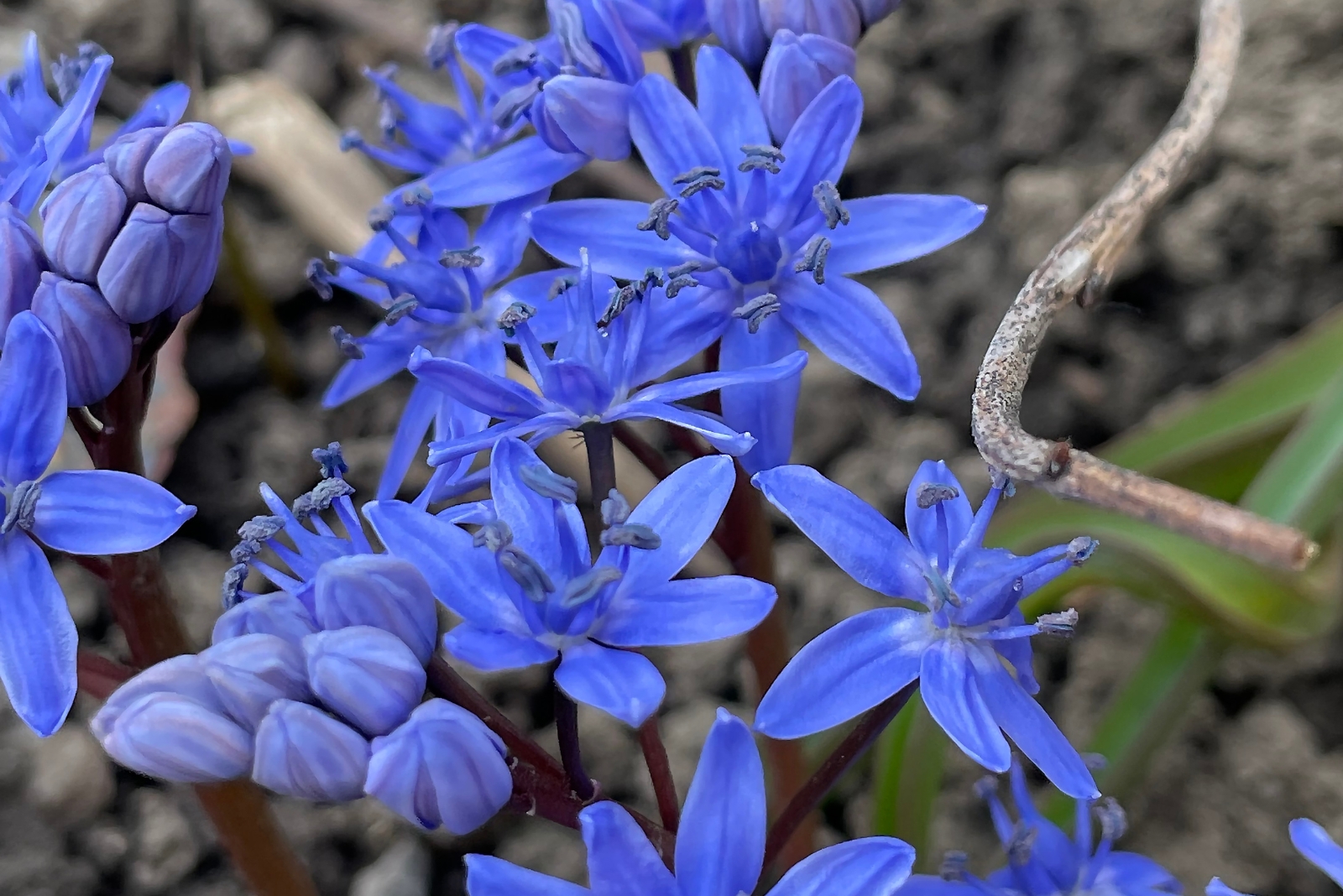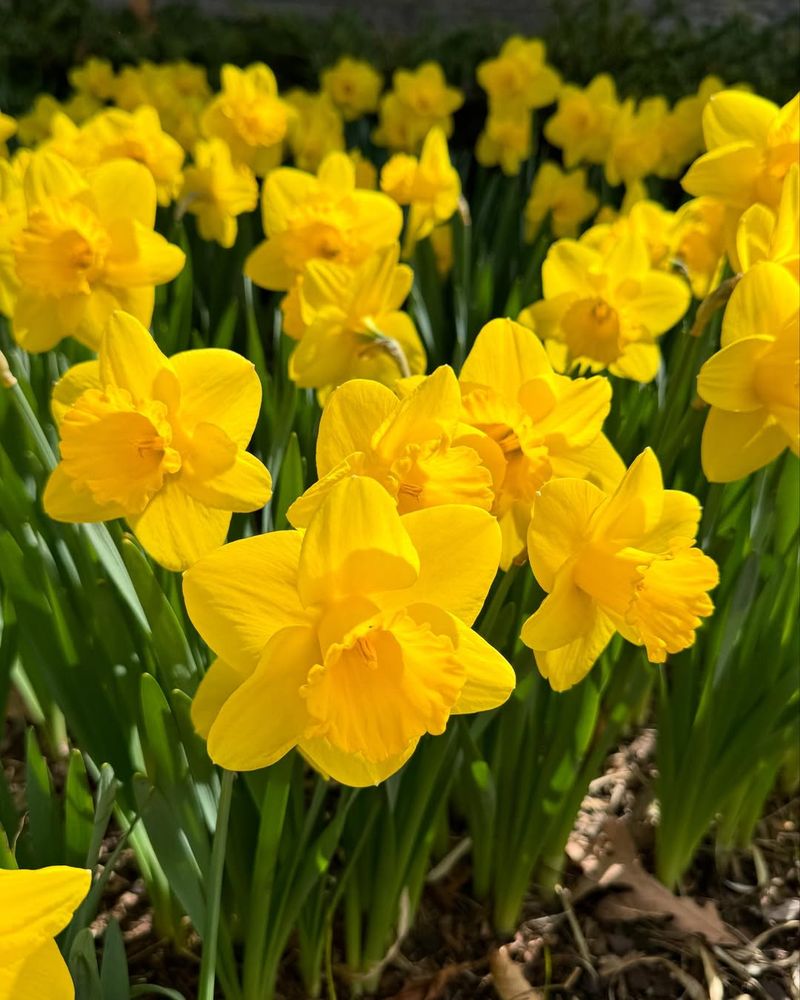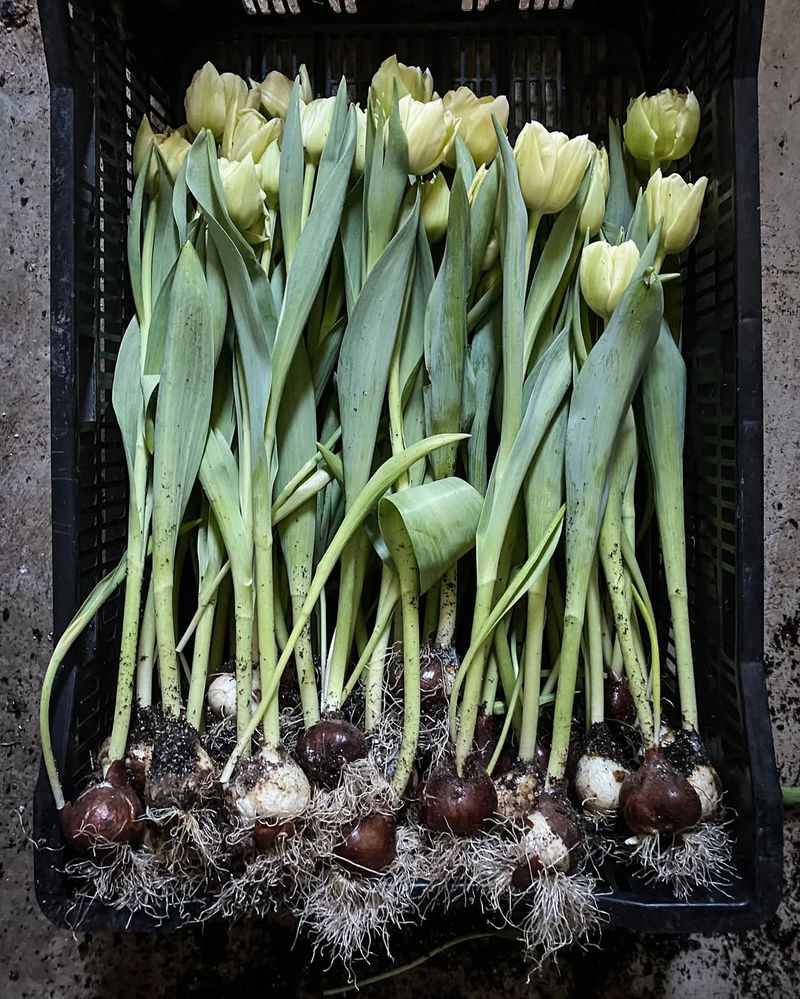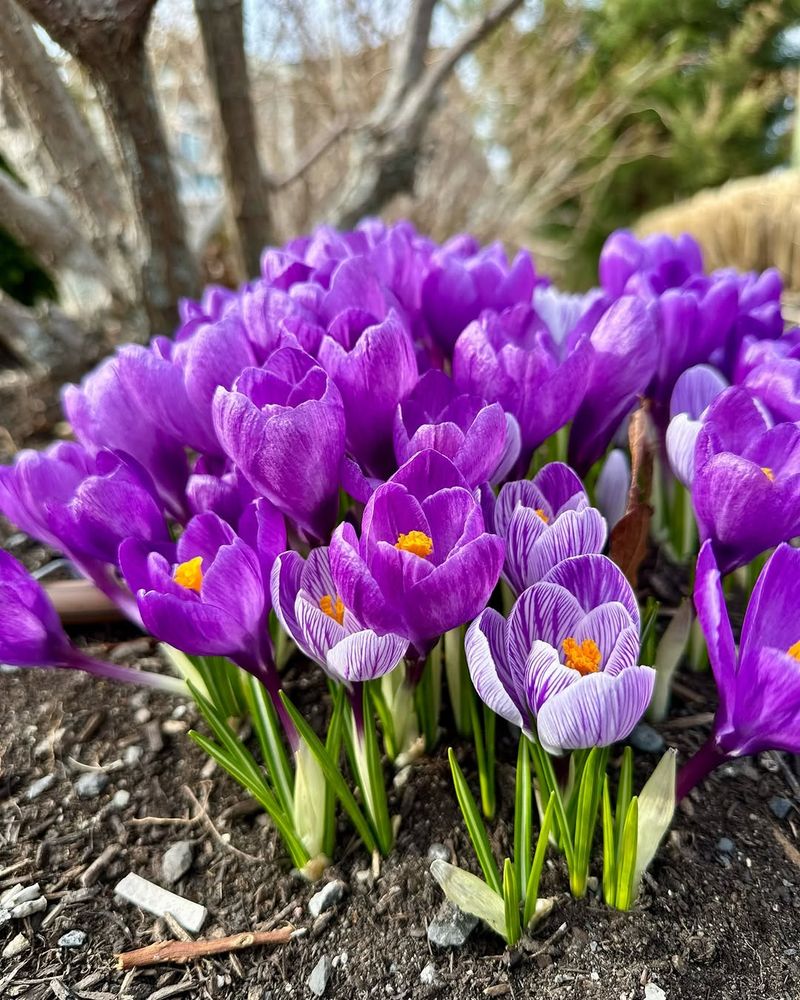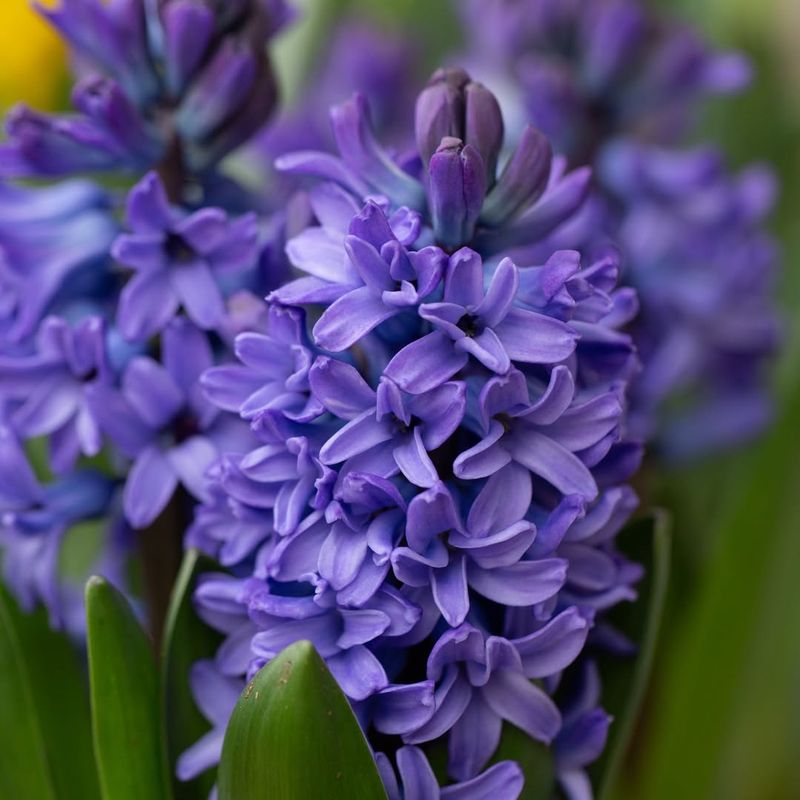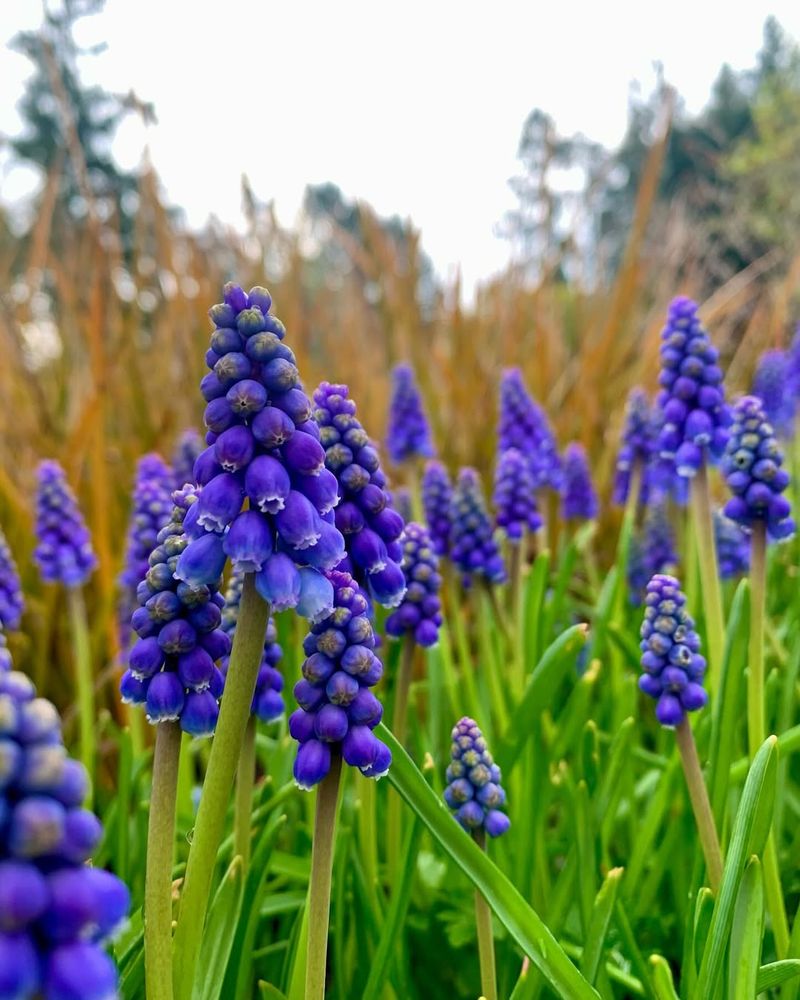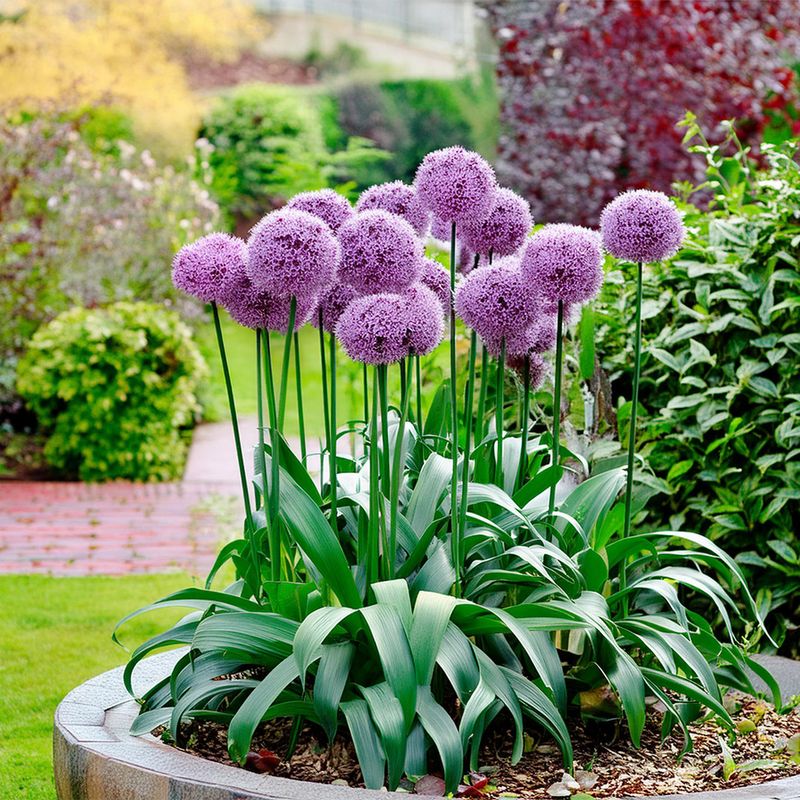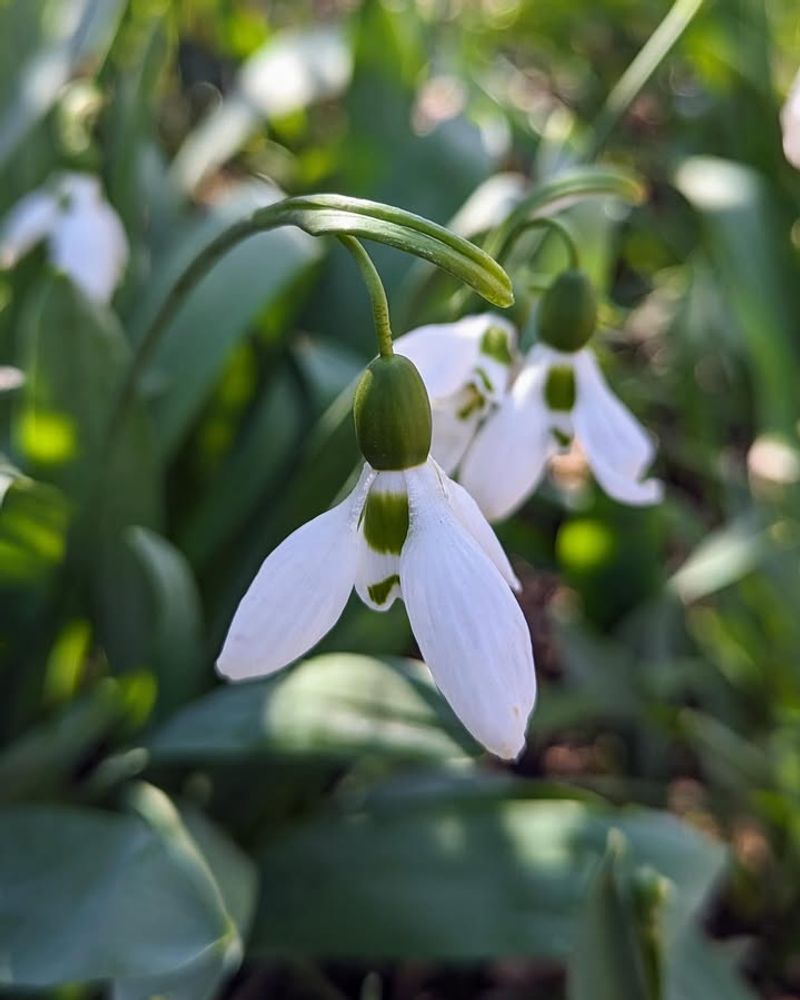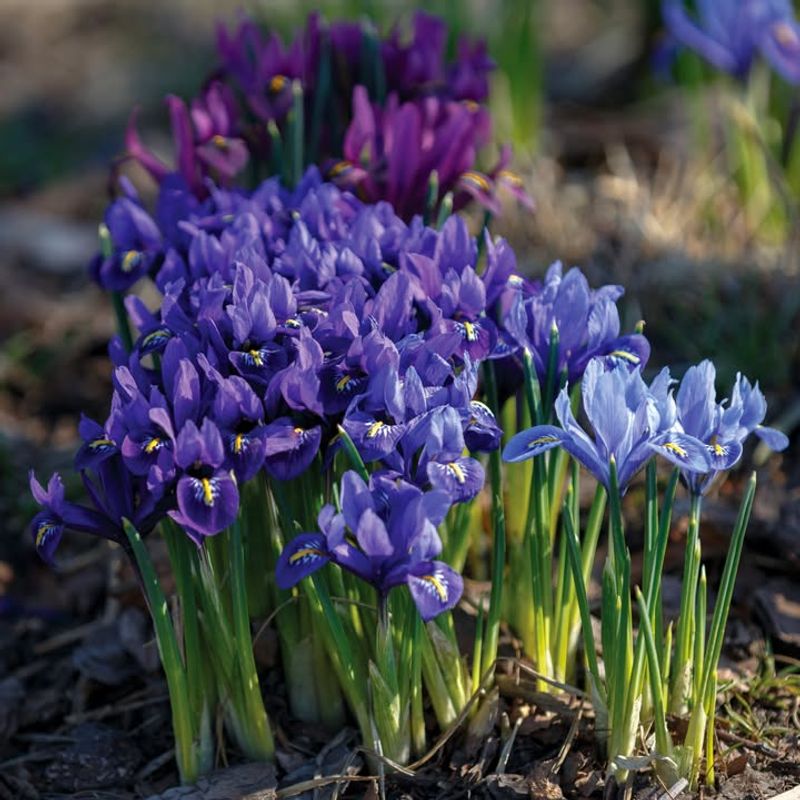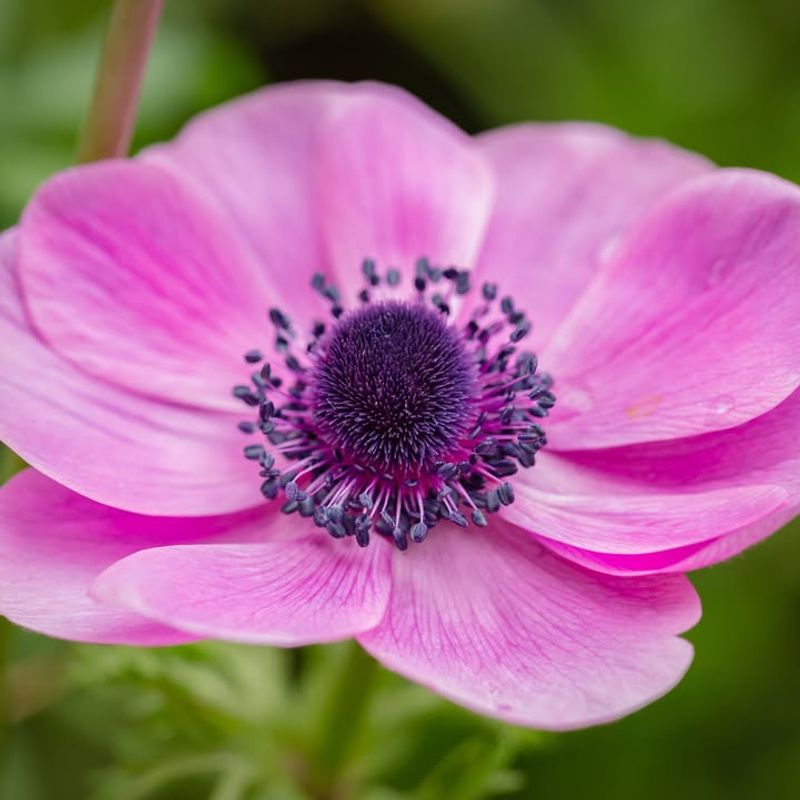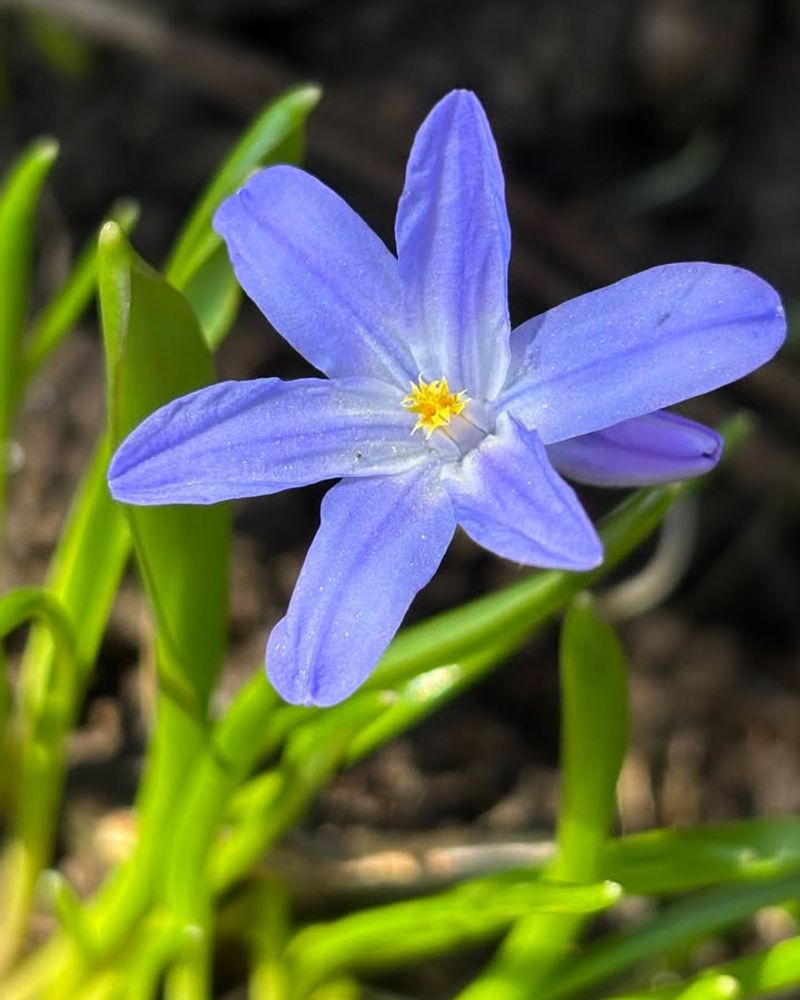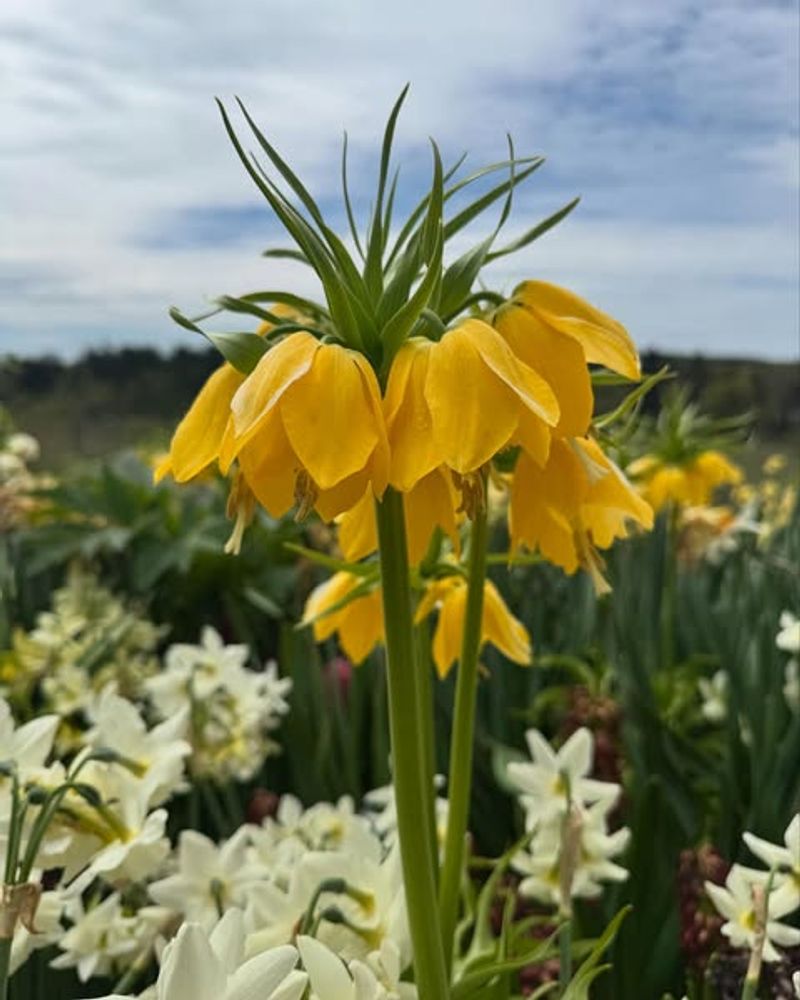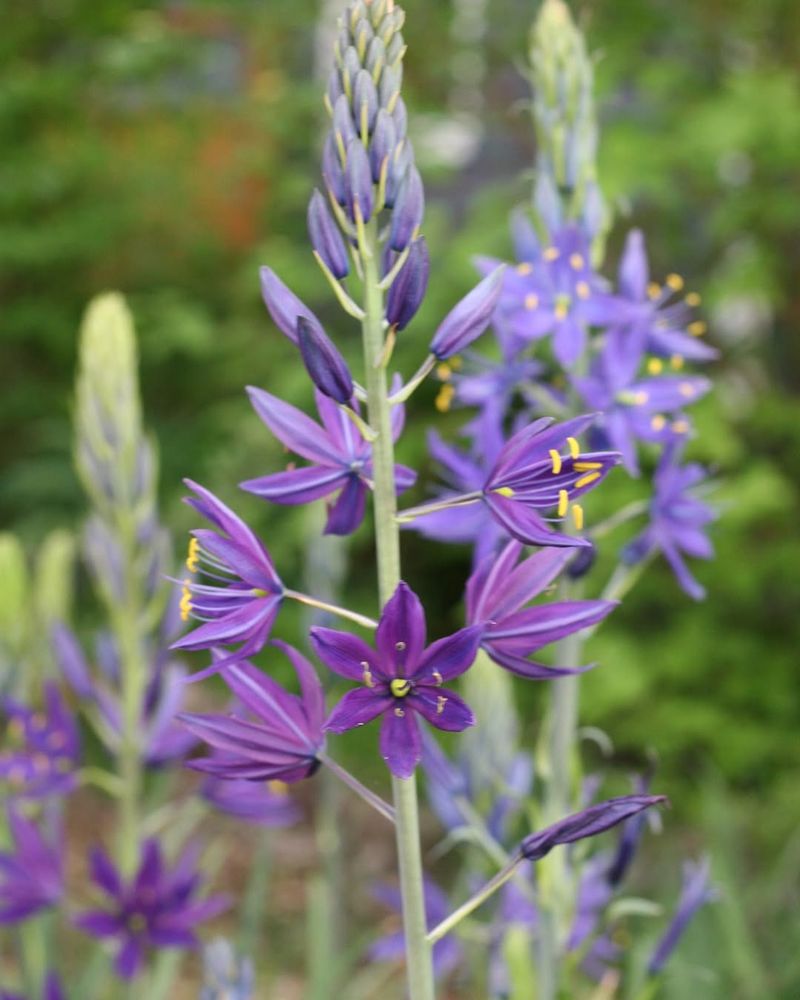October is the perfect time for North Carolina gardeners to get their hands dirty and plant bulbs that will bring beautiful spring blooms. The cool fall weather gives bulbs time to settle in and develop strong roots before winter arrives.
When spring finally comes around, your garden will burst with colorful flowers that reward your autumn efforts with stunning displays that brighten every corner of your yard.
1. Daffodils
Cheerful yellow blooms make daffodils one of the most beloved spring flowers across North Carolina gardens. Plant them about six inches deep in well-draining soil where they’ll get plenty of sunshine.
Squirrels and deer usually leave daffodils alone, which makes them perfect for gardens with wildlife problems. They multiply naturally over the years, creating bigger and more impressive displays each spring.
Mix different varieties to extend your blooming season from early March through late April.
2. Tulips
Nothing announces spring quite like tulips standing tall with their cup-shaped flowers in every color imaginable. North Carolina’s climate can be tricky for tulips, so choose varieties bred for warmer zones.
Plant bulbs eight inches deep and consider treating them as annuals since our mild winters don’t always provide enough chill hours. Adding bone meal to the planting hole gives them extra nutrients for spectacular blooms.
Group them in clusters for maximum visual impact in your garden beds.
3. Crocuses
Among the earliest bloomers, crocuses pop up when winter still lingers, bringing welcome splashes of purple, white, and yellow. Plant these small bulbs three inches deep in groups for the best effect.
They naturalize beautifully in North Carolina lawns and under trees, spreading slowly to create carpets of color. Crocuses need very little care once established and return faithfully year after year.
Bees absolutely love them since they provide crucial early-season nectar when few other flowers are blooming.
4. Hyacinths
Few spring bulbs can match the incredible fragrance that hyacinths bring to gardens and patios throughout North Carolina. Their dense flower spikes come in gorgeous shades of pink, purple, white, and blue.
Plant bulbs six inches deep in locations where you’ll actually smell them, like near walkways or outdoor seating areas. The first year always produces the most impressive blooms, though they continue flowering for several seasons.
Indoor forcing works wonderfully with hyacinths if you want winter blooms inside your home.
5. Grape Hyacinths
Don’t let their small size fool you because grape hyacinths pack serious visual punch when planted in large drifts. The tiny blue or white flowers resemble miniature grape clusters on short stems.
Plant them just three inches deep and watch them multiply enthusiastically throughout your garden beds. They work wonderfully as edging plants or tucked between larger bulbs like tulips and daffodils.
Once established, grape hyacinths spread naturally and require almost zero maintenance while providing reliable spring color.
6. Alliums
Architectural and dramatic, alliums add height and structure with their perfectly round flower heads perched on tall stems. Plant these members of the onion family six to eight inches deep in sunny spots with good drainage.
Their blooms appear in late spring, bridging the gap between early bulbs and summer perennials beautifully. Deer and rabbits avoid them completely thanks to their oniony scent, making them ideal for North Carolina problem gardens.
The dried seed heads look fantastic even after flowers fade.
7. Snowdrops
Tiny but mighty, snowdrops often bloom while snow still covers northern states, though North Carolina gardeners see them in late winter. Plant these dainty white flowers three inches deep in partial shade where they’ll naturalize over time.
They prefer spots that stay moist during their growing season but dry out in summer when they’re dormant. Snowdrops look magical planted under deciduous trees or along woodland garden edges.
Their ability to push through cold soil makes them true harbingers of spring.
8. Iris Reticulata
Miniature versions of their larger cousins, these dwarf irises deliver big color on compact plants just six inches tall. Their intricate flowers feature stunning purple, blue, or yellow petals with delicate markings and sweet fragrance.
Plant bulbs four inches deep in well-draining soil since they absolutely hate sitting in wet conditions. They bloom very early, often alongside crocuses, bringing elegant beauty to North Carolina rock gardens and containers.
Once flowering finishes, their grass-like foliage disappears quickly and neatly.
9. Anemones
Poppy-like flowers with dark centers make anemones absolute showstoppers in spring gardens across North Carolina. Soak the dried corms overnight before planting them two inches deep to jumpstart growth.
They prefer cooler weather and partial shade, performing beautifully in spots where summer heat becomes intense. Mix red, pink, purple, and white varieties together for cottage garden charm that feels effortlessly romantic.
Cut flowers last wonderfully in vases, bringing their cheerful blooms indoors for enjoyment throughout your home.
10. Scilla
Brilliant blue scilla flowers create stunning carpets of color when planted en masse under trees or in North Carolina lawn areas. Plant these carefree bulbs three inches deep and then basically forget about them.
They naturalize aggressively, spreading to form larger colonies each year without becoming invasive pests. The intense blue shade is rare among spring bulbs, making scilla especially valuable for gardeners seeking unique colors.
They tolerate shade better than most bulbs, thriving where other spring flowers struggle to perform well.
11. Fritillaria
Unusual checkered patterns on nodding bell-shaped flowers make fritillaria conversation starters in any North Carolina spring garden. Plant bulbs four inches deep on their sides to prevent water from collecting in the hollow tops.
They prefer partial shade and soil that stays consistently moist during their growing season in spring. The checkered lily variety features purple and white checkerboard patterns that look almost painted on by hand.
Though not as common as tulips or daffodils, fritillaria adds sophisticated charm that impresses garden visitors.
12. Camassia
Native to North America, camassia produces tall spikes of star-shaped blue or white flowers in late spring. Plant bulbs four inches deep in locations that get spring moisture but dry out somewhat during summer months.
They’re incredibly tough once established, tolerating clay soil and occasional flooding better than most ornamental bulbs. The vertical flower spikes add valuable height to borders and meadow-style plantings throughout your property.
Pollinators visit camassia enthusiastically, making them excellent choices for wildlife-friendly gardens.

